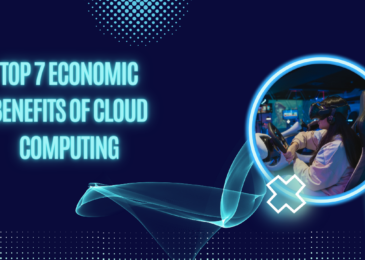Software as a Service (SaaS), the landscape is continuously evolving with each passing year, presenting new opportunities and challenges for businesses worldwide. As we move forward into 2024, several key trends are shaping the future of SaaS. These include advancements in artificial intelligence, data analytics, cybersecurity measures, and the increasing demand for seamless integrations and personalized user experiences. Understanding these trends is crucial for businesses aiming to leverage SaaS solutions effectively, enhance operational efficiency, and maintain competitive advantage in a rapidly changing digital environment.
Top 10 Trends in SaaS (Software as a Service) for 2024 are:
1. Hybrid and Multi-cloud Solutions
Hybrid and multi-cloud solutions are becoming increasingly prevalent in the SaaS landscape for 2024. Businesses are adopting these strategies to optimize performance, scalability, and data management across different cloud environments. Hybrid solutions integrate on-premises infrastructure with public and private clouds, allowing organizations to leverage existing investments while gaining flexibility and scalability from cloud services.
Multi-cloud strategies involve using multiple cloud providers for different workloads or geographic regions, reducing dependency on a single vendor and enhancing resilience against outages. This approach also enables organizations to choose the best-in-class services from different providers based on specific needs such as performance, cost, or compliance requirements.
Key benefits include improved data sovereignty, disaster recovery capabilities, and the ability to comply with regional data regulations.
2. Enhanced Data Privacy and Security
Enhanced data privacy and security are critical trends shaping the SaaS landscape in 2024. With increasing concerns over data breaches and regulatory compliance, SaaS providers are prioritizing robust security measures to protect customer data. This includes implementing encryption both at rest and in transit, adopting zero-trust security architectures, and enhancing authentication mechanisms such as multi-factor authentication (MFA).
SaaS platforms are investing in compliance with global regulations such as GDPR, CCPA, and others to ensure data protection and privacy standards are met. Regular security audits, vulnerability assessments, and proactive threat detection and response are becoming standard practices to mitigate risks and maintain trust with customers.
3. Vertical-specific SaaS Solutions
Vertical-specific SaaS solutions are gaining prominence in 2024 as businesses seek specialized software tailored to their industry needs. These solutions are designed to address specific challenges and requirements of vertical markets such as healthcare, finance, manufacturing, and retail. Unlike generic SaaS offerings, vertical-specific solutions offer industry-specific functionalities, compliance with sector regulations, and integration with specialized hardware or software systems commonly used in the industry.
For example, healthcare SaaS solutions may include features for electronic health records (EHR), telemedicine, and patient management, ensuring compliance with HIPAA regulations. Financial services SaaS platforms might focus on regulatory reporting, risk management, and financial analytics. Similarly, manufacturing SaaS solutions could offer modules for supply chain management, production scheduling, and quality control.
4. Collaboration Tools and Remote Work
Collaboration tools tailored for remote work are pivotal trends in SaaS for 2024, reflecting the shift towards flexible work arrangements and distributed teams. These tools facilitate seamless communication, project management, and document collaboration across geographies and time zones. Features such as video conferencing, instant messaging, virtual whiteboards, and file sharing enable teams to collaborate effectively from anywhere.
Integration with productivity apps and cloud storage services further enhances workflow efficiency, allowing real-time updates and version control. As businesses prioritize remote work capabilities, SaaS providers are innovating with enhanced security measures, scalable solutions, and intuitive user interfaces to support diverse organizational needs.
Moreover, collaboration tools are evolving to support hybrid work environments, accommodating both remote and in-office employees seamlessly.
5. Subscription Model Flexibility
Subscription model flexibility is a key trend shaping SaaS strategies in 2024, responding to diverse customer preferences and operational needs. SaaS providers are increasingly offering a range of subscription options beyond traditional fixed-price models. This includes usage-based pricing, where customers pay based on their actual usage or consumption of the software’s features and resources.
Additionally, pay-per-feature models allow users to select and pay for specific functionalities or modules that best fit their requirements, providing cost-effective customization. Tiered subscriptions offer different levels of service with varying features and support options, catering to organizations of different sizes and complexities.
These flexible subscription models empower businesses to optimize their software expenditures, scale resources according to demand, and align costs with actual usage patterns.
6. API-first Approach
The API-first approach is emerging as a fundamental strategy in SaaS development for 2024, prioritizing the design and functionality of application programming interfaces (APIs) from the outset. This approach focuses on creating robust, well-documented APIs that serve as the foundation for integrating and extending SaaS applications with other systems, services, and platforms.
By adopting an API-first mindset, SaaS providers streamline the process of connecting their software with third-party applications, enhancing interoperability and flexibility. APIs enable seamless data exchange, automation of workflows, and customization of functionalities according to specific customer needs. They also support rapid innovation and scalability, allowing businesses to adapt quickly to evolving market demands and technological advancements.







